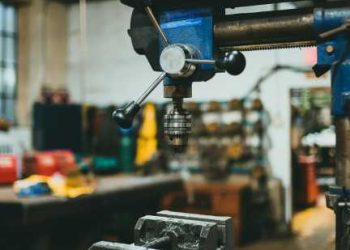In today’s fast-paced world, industries are constantly seeking ways to increase efficiency and productivity. One of the most effective methods of achieving this is through the implementation of robotics and automation in manufacturing processes. This revolutionary technology has transformed the manufacturing landscape, streamlining operations and maximizing output. In this blog post, we will explore the various benefits and applications of robotics and automation in manufacturing, and how they have revolutionized the industry.
First and foremost, robotics and automation have significantly improved efficiency in manufacturing processes. These technologies eliminate the need for human intervention in repetitive and monotonous tasks, resulting in reduced errors and increased speed. By automating these processes, companies can significantly increase their production rates while maintaining consistently high-quality products. Robots can work tirelessly for extended periods without the need for breaks, leading to a considerable decrease in idle time and increased overall productivity.
Moreover, robots can perform tasks that may be too dangerous or hazardous for human workers. For example, in industries involving heavy machinery or hazardous materials, robots can be utilized to handle these operations, ensuring the safety of workers. By replacing humans in these risky tasks, companies can avoid potential accidents and injuries, creating a safer work environment.
In addition to improving efficiency and safety, robotics and automation also facilitate better accuracy and precision in manufacturing. Machines are programmed to perform with utmost precision, resulting in reduced variability and errors in the production line. By minimizing errors, companies can ensure that every product meets the highest quality standards, leading to increased customer satisfaction and brand reputation.
Furthermore, robotics and automation have enabled increased flexibility in manufacturing processes. Robots can be programmed and reprogrammed to perform various tasks, making them versatile and adaptable to changing industry demands. With technology constantly evolving, manufacturers need to quickly adjust their production processes to incorporate new changes or introduce new products. Robots can easily be retooled or reprogrammed to accommodate these changes, providing manufacturers with the agility needed to stay competitive in a rapidly changing market.
Another significant advantage of automation is its ability to collect and analyze data in real-time. By utilizing sensors and data analysis software, companies can gather valuable insights about their production processes. This data can be used to identify bottlenecks, optimize workflow, and predict maintenance needs. This real-time data enables manufacturers to make informed decisions quickly, resulting in further improvements in efficiency, quality, and productivity.
The applications of robotics and automation in manufacturing are widespread and diverse. In the automotive industry, robots have been used for decades in assembly lines to perform tasks such as welding, painting, and parts placement. In pharmaceutical manufacturing, robots are utilized to accurately fill and seal medication containers, ensuring precise dosage and reducing contamination risks. These examples illustrate how robotics and automation have revolutionized manufacturing processes, across various industries.
Despite the numerous benefits, it is essential to acknowledge the potential challenges and concerns associated with implementing robotics and automation in manufacturing. One of the primary concerns is the potential displacement of human workers. While automation does eliminate some jobs, it also creates new opportunities for growth and specialization. By freeing up human workers from repetitive and mundane tasks, they can be upskilled and redirected towards higher-value roles that require critical thinking and problem-solving abilities.
In conclusion, the integration of robotics and automation in manufacturing processes has brought enormous benefits to the industry. From improved efficiency and productivity to enhanced safety and precision, these technologies have revolutionized the manufacturing landscape. As we look to the future, it is clear that robotics and automation will continue to play a pivotal role in streamlining manufacturing processes, enabling companies to stay agile, competitive, and at the forefront of innovation.












